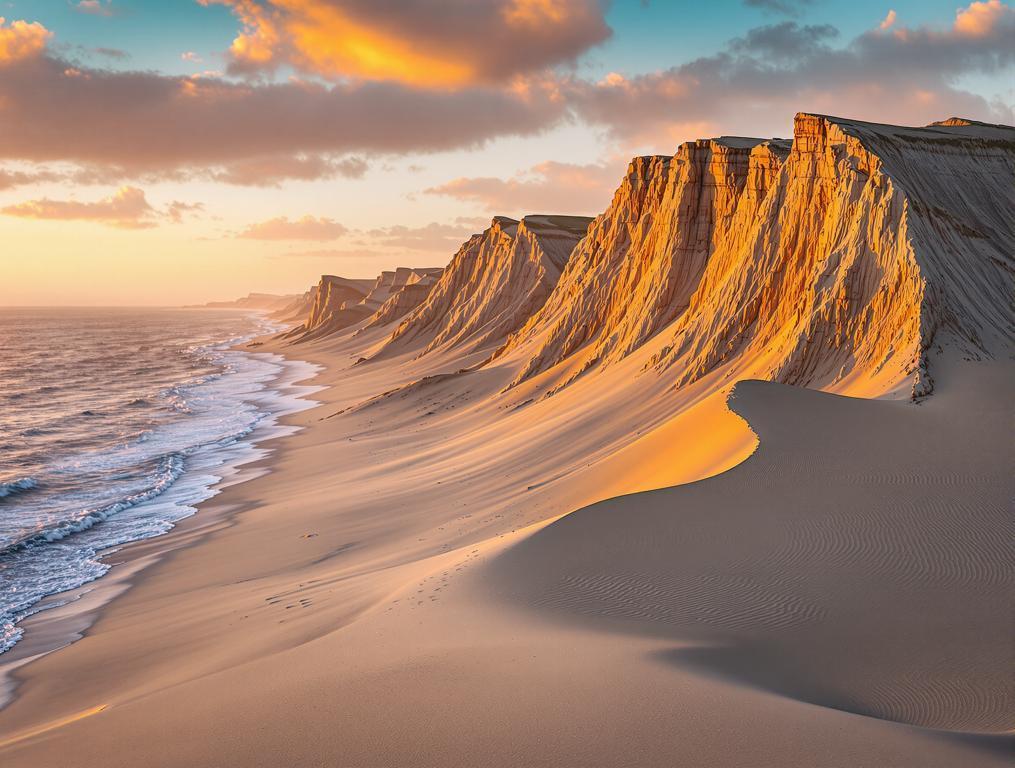I’m standing barefoot on Europe’s tallest sand dunes, watching the Baltic Sea to my left and Curonian Lagoon to my right. I’ve just climbed the iconic Parnidis Dune in Nida, Lithuania – a pristine coastal village where just 2,385 residents guard one of Europe’s most remarkable natural wonders. The morning light casts long shadows across the undulating landscape, and despite being a UNESCO World Heritage site, I count only seven other visitors sharing this panoramic viewpoint with me.
Where 2,385 residents protect a UNESCO treasure most Europeans never discover
Nida exists in perfect contradiction – a tiny settlement responsible for preserving the magnificent Curonian Spit, a 98-kilometer sandbar that separates the Baltic Sea from the Curonian Lagoon. The village forms part of Neringa municipality, Lithuania’s westernmost outpost and the least populated municipality in the country.
What strikes me immediately is the sense of space. Unlike the crowded Mediterranean coastlines where tourists jostle for beach spots, Nida’s pristine shores stretch seemingly endlessly. The traditional wooden houses, painted in blues and whites, echo Baltic fishing heritage through authentic preservation of cultural heritage that feels genuine rather than staged for tourists.
“We live with the dunes, not despite them,” a local fisherman tells me as he mends his nets at the harbor. “The sand moves and shifts, sometimes meters each year. We adapt because this place demands respect.”
This morning, I visited Thomas Mann’s summer cottage, where the Nobel-winning author spent summers between 1930-1932. The museum feels intimate, much like Nida itself – a place where cultural significance exceeds its physical size. While Malta’s ancient temples rival Nida’s historical significance, the Lithuanian village offers something increasingly rare in Europe: authentic experiences without crowds.
The Baltic alternative to Greek islands: pristine dunes without Mediterranean crowds
Summer in Nida delivers the ideal coastal experience that Greek islands promise but rarely deliver anymore. The village sits at the heart of what locals call the “Lithuanian Sahara” – massive sand dunes that reach heights of up to 60 meters. As I walk along the ridgeline, the sand shifts beneath my feet, a constant reminder of nature’s dynamic presence.
The contrast with other European beach destinations is striking. While Santorini handles millions of tourists annually, Nida receives a fraction of those numbers despite its UNESCO status. The result is a coastal paradise where you can still find solitude even in peak season.
“I’ve been to Mykonos and Sardinia, but this place has something different – a kind of pristine beauty that hasn’t been commercialized. You can actually hear yourself think here.”
The Parnidis Dune Sundial, partially restored after storm damage, marks time with ancient precision, towering over landscapes that evoke undiscovered European coastal treasures rather than a destination just three hours from Vilnius. Unlike destinations requiring imported sand, Nida’s environmental conservation efforts focus on protecting its natural dune system from erosion and human impact.
What the guidebooks won’t tell you about Nida in summer 2025
Nida achieves its balance between preservation and tourism through careful planning. Visit on weekdays rather than weekends to avoid the day-trippers from Klaipėda, just 50 kilometers north. The best parking is at the northern lot by the harbor, which costs €5 for the day but fills quickly after 10am.
For the fullest experience, climb the Parnidis Dune at either sunrise (around 4:45am in July) or sunset (9:30pm) when the light transforms the landscape and most tourists have departed. The Amber Museum opens at 10am, but locals suggest visiting after 3pm when cruise ship groups have moved on.
Don’t miss the traditional smoked fish stands near the harbor, where €7-10 buys a freshly prepared local delicacy using techniques passed through generations. The weathered hands of the fishermen tell as much of Nida’s story as any museum exhibit.
As my wife Sarah photographs the wooden weather vanes atop the fishermen’s houses, I’m reminded that places like Nida represent a disappearing authenticity in Europe. The village persists in a delicate balance – accessible enough for travelers willing to make the journey, yet protected by its UNESCO status from the overdevelopment that has transformed so many coastal communities. Here, where the dunes meet the sea, Lithuania offers a reminder that sometimes the most remarkable destinations are those that whisper rather than shout.
